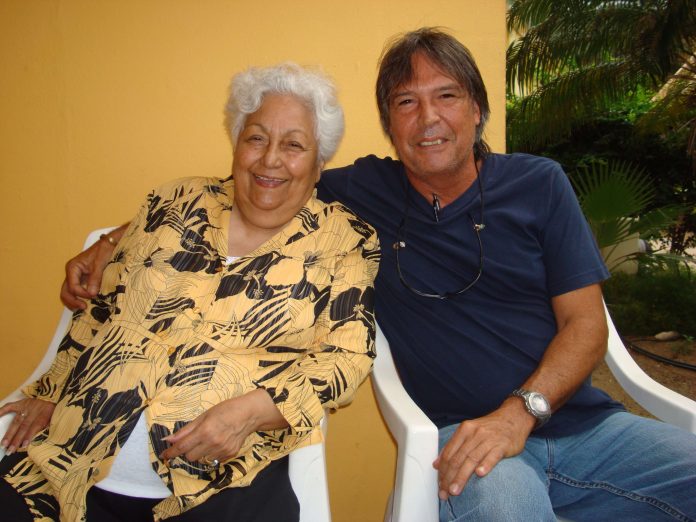Etnia Nativa is where to connect and inspire with the mystical aspects of Aruba. Centuries-old cultural heritage is shared through this Island Insight platform, encouraging readers to engage with island knowledge in a unique local setting. We are Caquetios at heart, flesh, bone, and soul. We are still here; we are still seen as a minority, and still the last to drink.
Approximately 3000 to 2500 years ago, Amerindian groups of agro-potters from the Amazon and Orinoco river basins started their overland journey. Spreading in a northwestern direction. They had overcome great obstacles through many generations. Other groups chose the rivers to reach out to the Atlantic Ocean and further into the Caribbean Sea. Perfecting their vessels into seaworthy canoes capable of traveling alongside the coastline and the open sea and so reaching the isles of the Antilles.
These tropical rain forest farmers were Arawak-speaking people who colonized the northern and coastal areas of South America and almost all the islands of the Caribbean Sea. Our island was soon to be transformed into an area where slash-and-burn or tropical forest agricultural techniques were introduced and practiced.
This method of agriculture of clearing the land for agricultural purposes is associated with the cultivation of many tubers such as yuca, yams, sweet potatoes, corn, beans, squash, and bananas, as well as many other plants whose seeds could be ground into flour for the elaboration of arepas, cachapas, ayacas, tortillas, etc. as part of their main source of staples.
Aruba’s autochthone Amerindians stem from the great Caquetio nation, Native people who considered a specific zone in the Northwestern South American continent, today’s Venezuela, their own zone of influence. They lived all along the Eastern shores of Lake Maracaibo, Falcon State, and the ABC Islands during the time of the Spanish conquest. They moved inland to avoid enslavement by the Spaniards but were eventually destroyed as a nation, as were their neighbors, the Quiriquire and the Jirajara, who suffered the same fate. Caquetían people were also present in Aruba, Curaçao, and Bonaire when these islands were first discovered by Alonso de Ojeda in 1499.
During the first years of colonization, the natives of Aruba were described by the Spaniards as strong, tall, and handsome, while the women were beautiful with long black hair. The mainland Caquetios and those of our islands were one nation during pre-Columbian times, as archaeological and biological evidence points towards close ties. As many as 800 souls lived in Aruba at the time of the Spanish discovery in 1499. Curaçao, Bonaire, and Aruba were declared in 1513 “islas inutiles’ (useless islands). Two years later, some 2000 Caquetios from the three ABC islands were taken hostage and transported as slaves to Hispaniola to work the mines.
These Indians presumably comprised the entire population of the islands, but in time, 150 to 200 were returned to Aruba and Curaçao in 1526 to work on the exportation of Brazilian wood, Kwihi, and Watapana pods. The origins of those who returned to Aruba and Curaçao were mainly Caquetian. The most likely scenario is that many of the natives descending from those who were brought back to Aruba from Hispaniola (DR) were taken from Aruba at the time. This scenario is supported by the fact that some of these natives migrated to the mainland in 1723 to erect the town of El Carrizal and were described as Caquetians originally from Aruban.
In episodes 110 and 151, we addressed the issue of who the Aruban ancestors were and where they came from, as well as the genetic inheritance of Arubans by maternal line through mitochondrial DNA. Concerning European claims regarding the extinction of Aruban indigenous roots. Studies revealed in the books by Dr. Oswald R. Wever, MD, PhD, FACP: “Genetic Structure of the Aruban Population” and “Cultural and Genetic Heritage of Arubans”.
– “The real “sense of belonging” is the awareness of having emotionally and intellectually incorporated and accepted Aruba’s history which includes all those Arubans who existed before one’s own existence had even begun”.—Dr. Oswald Wever.
If you are keen to explore Aruba’s deep heritage, Etnia Nativa is the place. A private residential house that integrates natural and reused materials and is bursting with art, culture, and heritage. Each visitor is guided through an authentic encounter by the owner-builder and cultural expert.
Bookings: etnianativa03@gmail.com or WhatsApp (message only) at +297 592 2702.




















